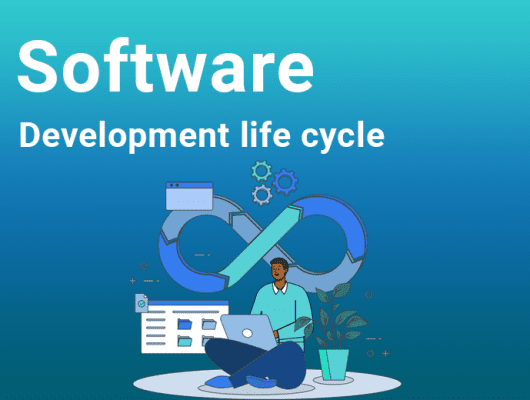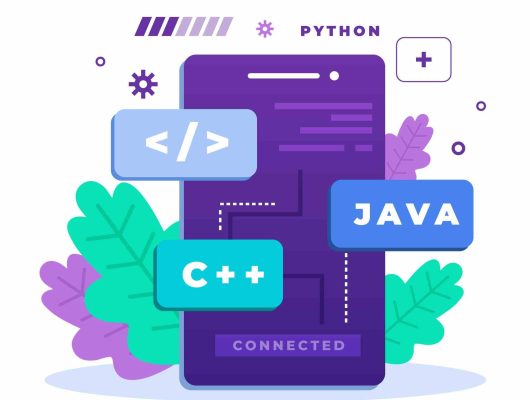
Front-end vs Back-end Development ( Ultimate Guide)
Front-end and back-end development are essential for any software development. Front-end development focuses on what users see and interact with, such as buttons, menus, and layouts. On the other hand, back-end development deals with the behind-the-scenes work, like databases and server sides, that make the front-end work.
But what makes front-end and back-end development different? How do developers decide which one to focus on? Is one more important than the other?
These questions are essential to understanding the roles each plays in creating a successful digital product. In this article, we’ll explore the differences between front-end and back-end development and why both are crucial for a functional website or app.
So, let’s get started.
Table of Contents
Understanding Front-end Development
Front-end development focuses on a website’s graphical user interface. Front-end programmers use design expertise, programming languages, and other tools to ensure users can interact and navigate websites easily. They are responsible for crafting the designs, arrangements, and navigation menus for websites or web applications.
Front end web developers focus on creating a website construct, utilizing coding languages like JavaScript, HTML, and CSS etc., each serving a unique purpose.
JavaScript enables advanced interactive features, CSS introduces aesthetic components, and HTML organizes the website’s content and framework. Some computer languages, like Python, PHP, or Ruby, are less frequently known to front-end developers.
These developers have knowledge about jQuery, Bootstrap, AngularJS, and EmberJS, among other frameworks and tools. These libraries condense code, whereas frameworks guarantee that content displays correctly across all devices.
Jobs of Front-end developers
Developers communicate with clients and project managers on the front-end with an idea or a vision for their website or web pages. They are responsible for applying knowledge and expertise to solve any digital issues. This frequently entails a few of the following regular duties:
- Having conversations with customers: The front-end developer needs to be aware of the client’s goals for the project before they can begin working on anything. To avoid wasting time on the first draft, practicing paying close attention to the client’s goal, ask proper questions to avoid any mishap along the development way.
- Make the website’s visual design: For intricate projects, front-end developers work in tandem with a digital designer who is responsible for the website’s graphic design. These developers also take on the task of choosing the forms, buttons, color palettes, fonts, layout, alignment, and image positioning, etc. that shape the overall aesthetics of your web application.
- Problem analysis: Furthermore, front-end developers need to be ready to conduct website tests and rectify any defects that hinder elements from operating correctly. The testing process might include checking the performance of personalization tools or content management systems.
Languages used on the Front-end

In front-end development, some of the most popular programming, markup, and scripting languages are as follows:
HTML
HTML, which stands for Hypertext Markup Language, is the technology that builds the framework like Firefox and Chrome use to display websites. It has hyperlinks, pictures, and text in it. It provides a user-friendly framework for formatting documents and enables page navigation.
CCS
The programming language CCS, short for Cascading Style Sheets, allows website developers to alter a page’s appearance. It also includes wording typefaces, color palettes, and text organization.
JavaScript
Websites are dynamic documents, and the computer programming language JavaScript enables interactive features and effects to be shown on a page. This is a crucial skill to acquire if a client requests an animated graphic, embedded media, or other dynamic content.
Frameworks for the Front-end
Fortunately, front-end engineers will only have to begin some projects from scratch, mainly if they are proficient with JavaScript frameworks. A framework is a pre-written collection of code that is useful for many websites’ standard functions and fundamental graphic elements. These frameworks are
- React JavaScript
- Ember Js
- Sass
- AngularJS
- jQuery
- Flutter
- Meaningful User Interface
- Foundation
- Backbone JS
Understanding Back-end development
Back-end developers concentrate mainly on the behind-the-scenes aspects of websites, utilizing their technical skills to perform the foundational tasks that define a website’s overall functionality and framework, thereby enabling the existence of the site’s front end. These professionals architect databases, applications, and web interfaces (API).
Apart from it, back-end developers need an extensive understanding of server-side programming languages such as Python, Ruby, and Java to develop applications. By completing boot camps, developers can learn or brush up on specific computer programming languages.
Responsibilities of a Back-end developer
Back-end developers are required to employ various technologies to fulfill the client’s goals as the back-end carries out different operations. As a result, the job tasks for front-end and back-end developers can greatly vary from each other:
Proper app function
Developers at this end are responsible for ensuring smooth operations. The back-end comprises the code that allows the website to operate, enabled by developed algorithms and logic. It includes databases, application programming interfaces, central application logic, etc.
Simplify the procedure
The majority of back-end developers understand that simplicity is not always beneficial. Nonetheless, streamlining the process is a vital element in back-end development. This results in fewer issues for both clients and end-users.
Collaboration with other group
Back-end developers frequently collaborate with other developers, digital designers, and project managers on projects, even though they don’t necessarily deal directly with clients.
Languages used for the Back-end
Several back-end languages will be used depending on what you want to construct. For instance, the technologies needed to create a server differ from those required to design a mobile app. These languages consist of:
- PHP
- C++
- Ruby
- Python
- JavaScript
Frameworks for the Back-end
Like front-end developers, back-end developers can also learn frameworks to speed up work. Several popular back-end frameworks are as follows:
- Django
- Rails
- Express
- Springtime
- Laravel
Node.js is an open-source platform that isn’t a language or a framework, but you may have heard of it as well. It is employed to enable the cooperation of several apps toward a challenging objective.
Front-end Vs Back-end development- Key differences

The broad words “front-end” and “back-end” logically group an application’s various software layers and technologies. The front-end emphasizes the elements that your users can view. On the other hand, your application’s back-end is everything that keeps it running.
For instance, consider the front-end of an automobile’s body and the back-end of all equipment within. An exquisitely designed automobile will only function at its best when the interior components are in good working order. Nonetheless, performance and speed are also influenced by several elements of external design. For optimal outcomes, your application’s front and back end must be built in unison.
Therefore, to better understand, let’s go over some more significant distinctions between the front and back-end.
Development objectives
Full-stack development aims to produce functional, effective, and responsive apps. The final application is created by front-end and back-end developers with different objectives.
Front-end developers create responsive designs, enhance usability, and optimize the program for speed and access. Their primary development objectives are to ensure that the front-end is fully responsive across many platforms and devices.
In contrast, the server-side functions of an application are created and subsequently maintained by back-end developers. Their primary development objectives are to produce a dependable architecture that reliably and effectively executes application operations. Their goal is to satisfy customer needs while taking cost and security into account.
Technologies
Front-end development deals with a website’s user interface. These technologies include programming languages like HTML, CSS, and JavaScript. To improve production efficiency, front-end frameworks are also utilized in front-end software development.
Back-end development uses Python and Ruby programming languages to create server-side logic. It also includes databases, storage technologies, and API technologies to facilitate communication between systems and applications.
Holding onto Caching
Caching plays a crucial role in optimizing application performance by temporarily storing files for quicker retrieval when needed. Its primary objective is to reduce load times and enhance the overall user experience.
In front-end development, cached files are utilized to improve performance when users revisit the same content. This ensures faster loading times and smoother browsing experiences.
Similarly, caching is employed in back-end development to alleviate strain on the application server. The content stored in the back-end cache is determined by the specific needs of the application. This may include static pages, database query results, API responses, session data, as well as multimedia content such as images and videos.
One common strategy involves utilizing a content delivery network (CDN), which acts as a intermediary between the front-end and back-end systems. The CDN assesses whether requested data is available and, if so, directly serves it to the user. This helps in reducing latency and optimizing resource utilization across the entire application infrastructure.
Safety
Front-end components are the main focus of front-end security. These consist of client-side scripts, input forms, and the user interface in security procedures such as authentication.
Input validation, turning off options let users enter code in text boxes, and multifactor authentication workflows are standard front-end development security techniques. Your user has several front-end security responsibilities, including password and device safety.
On the other hand, Back-end security focuses on data security in storage and oversees all facets of session security, access control, and authentication.
Developer abilities
Front-end developers consider user needs and are aware of the consumer experience. Their main areas of expertise include design understanding for producing visually appealing user flows and fluency with JavaScript, CSS, and HTML. Along with learning several front-end frameworks, front-end developers are proficient in speed optimization.
Back-end programmers, on the other hand, work for applications, improving their speed, security, and error-free functionality. Python, Ruby, Java, and PHP are just a few programming languages in that back-end developer use for its development. They are familiar with front-end and back-end-integrated application development frameworks such as Django, Ruby on Rails, and Laravel. Additionally, back-end developers possess skills in relational and non-relational database design and management.
Front-end Vs Back-end development- Comparison Table
| Differences | Front-end Development | Back-end Development |
| Responsibilities | Developers are responsible for designing physical appearance of the website | Developers create logical structure of the website |
| Average Earning | $80,796 | $90,652 |
| Languages | JavaScript HTML CSS | Python Java Ruby PHP |
| Collaborate with | Back-end developers Clients Business manager Stakeholders | Front-end developers Business manager Stakeholders |
Final Verdict
In short, functionality and success on the web heavily depends on both the front and back-end development. Therefore, to make your project a success, there is always a need for collaboration between front-end and back-end developers.
Website development company Onyxtec realizes that back-end and front-end descendants are critical to creating a successful digital product. So, if you are looking for a reputable development company for your software development, consider us. Our team of experts are highly knowledgeable of building the base and the coat of your application, ensuring success at every step of its development. And you know what’s the best part? Our budget friendly plan for your software development. So, what are you waiting for? Pick your phone and contact us now.
FAQ
Are front-end and back-end developers get equal pay?
Both front-end and back-end engineers earn back-end money more than the typical person. According to Payscale’s reported salaries, front-end developers make about $81,000 yearly, while back-end developers make $90,700 yearly.
How can I work as a back-end programmer?
For Back-end developers you need a bachelor’s degree in web development, programming, computer science, or similar subjects. Businesses occasionally hire developers who back their careers through certification courses, boot camps, or work experience.




